Swarm
Swarm is an informal game term. Swarming is just playing a lot of minions all at once. The Free Peoples player can typically only assign one minion to each companion in the Assignment Phase. Whatever minions are left over can be assigned by the Shadows player, who can stack extra minions wherever they like in the hopes of winning more skirmishes or overwhelming key companions.
The simplest swarm strategy is to play a bunch of minions, then stack all of the extras on the Ring-bearer in the hopes of overwhelming them. However, if the Ring-bearer is well-defended (eg by cards like The Tale of the Great Ring (10U116)
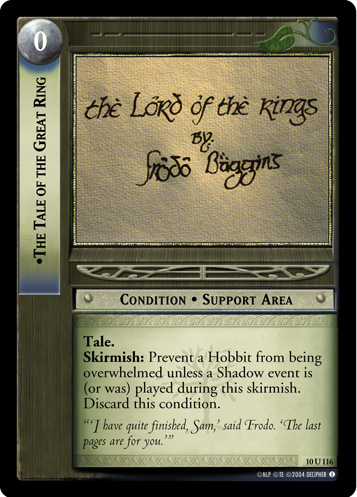 ), it might be better to aim to overwhelm another companion and win on a subsequent turn.
), it might be better to aim to overwhelm another companion and win on a subsequent turn.
Counters to swarm include Defender +1 abilities, versions of The One Ring that give the Ring-bearer strength or Hunter bonuses like The One Ring, Such a Weight to Carry (7R2)
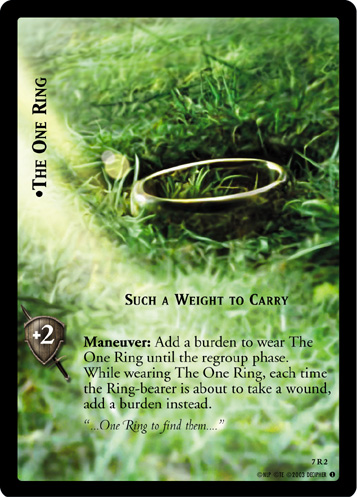 , cards that protect characters from being overwhelmed like The Tale of the Great Ring (10U116)
, cards that protect characters from being overwhelmed like The Tale of the Great Ring (10U116)
 , and alternate Ring-bearers with higher strength scores like Isildur, Bearer of Heirlooms (9R+33)
, and alternate Ring-bearers with higher strength scores like Isildur, Bearer of Heirlooms (9R+33)
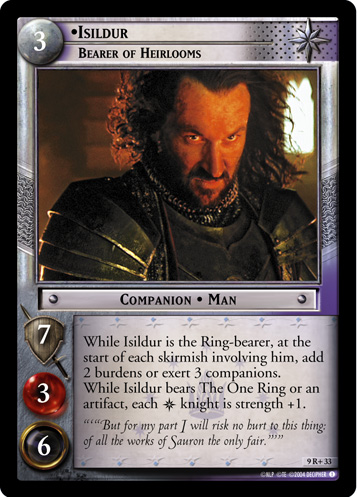 . In some formats that use older versions of the rules -- all formats before King Block and Movie Block -- cards that cancel skirmishes like Hobbit Stealth (1C298)
. In some formats that use older versions of the rules -- all formats before King Block and Movie Block -- cards that cancel skirmishes like Hobbit Stealth (1C298)
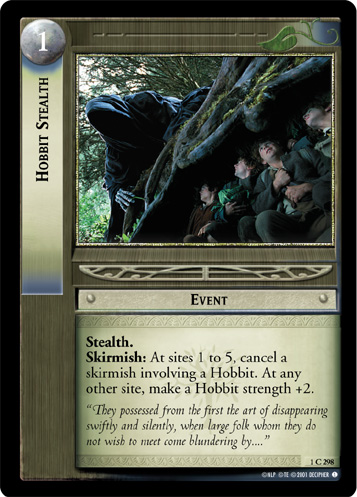 can also protect the Ring-bearer from a one-time swarm. Swarm decks also tend to run cheap, weak minions, which are inherently weak except when played in a large swarm.
can also protect the Ring-bearer from a one-time swarm. Swarm decks also tend to run cheap, weak minions, which are inherently weak except when played in a large swarm.
Moria is the classic swarm Shadow culture. It plays lots of cheap minions, draws more cards with Goblin Scimitar (1C180)
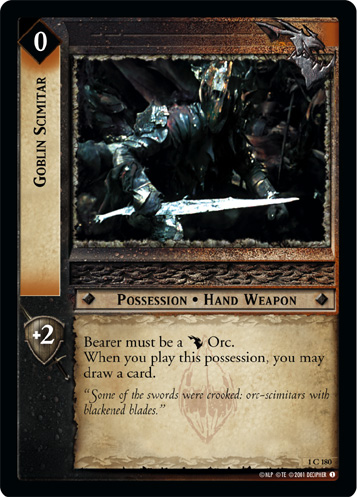 , generates more Twilight with Goblin Runner (1U178)
, generates more Twilight with Goblin Runner (1U178)
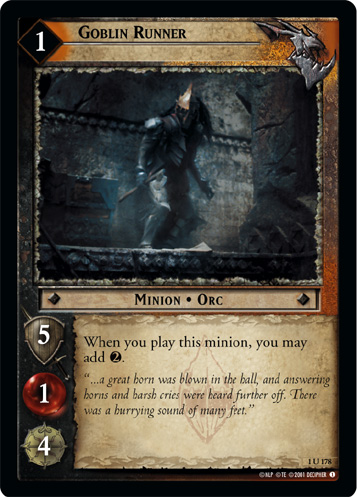 and Moria Scout (1C191)
and Moria Scout (1C191)
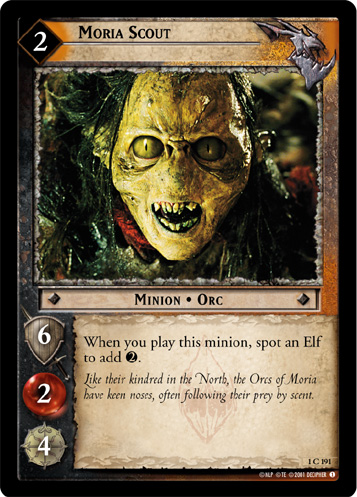 , then plays even more cheap minions. To keep from running out of minions to play, it reuses them with Goblin Swarms (1R183)
, then plays even more cheap minions. To keep from running out of minions to play, it reuses them with Goblin Swarms (1R183)
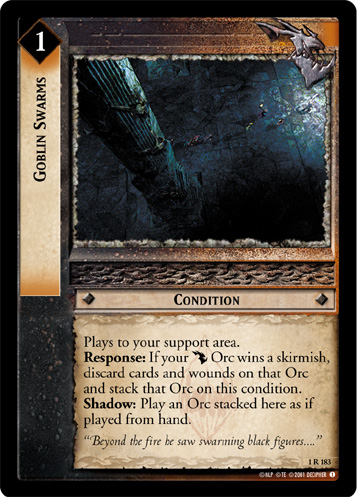 or plays them from discard with They Are Coming (1C196)
or plays them from discard with They Are Coming (1C196)
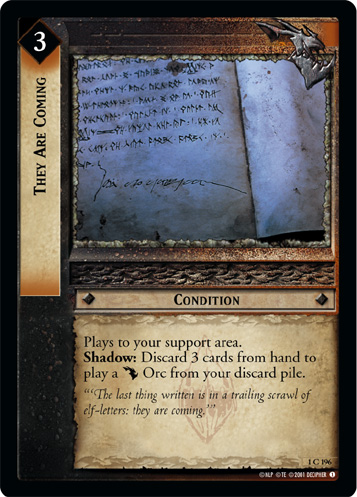 .
.